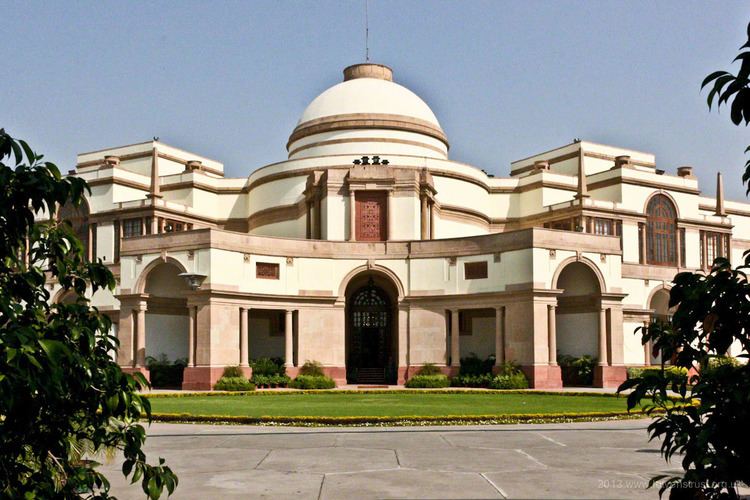Completed 1928 Opened 1928 Number of rooms 36 Lifts/elevators 0 | Floor area 8.77 acres Cost 200,000 GBP Construction started 1926 | |
 | ||
Similar Baroda House, Bikaner House, Rashtrapati Bhavan, Jubilee Hall - Hyderabad, 7 - Lok Kalyan Marg | ||
Hyderabad House (Hindi: हैदराबाद हाउस), is a building in New Delhi, India, used by the Government of India for banquets and meetings for visiting foreign dignitaries. It was designed by eminent British architect Sir Edwin Lutyens as a residence for Osman Ali Khan, the last Nizam of Hyderabad.
Contents
History
Designed by Sir Edwin Lutyens for the Last Nizam of Hyderabad, after most important princely rulers in British India were inducted into Chamber of Princes in 1919, and were to attend the Chambers meetings in Delhi. It is situated next to the Baroda House, the erstwhile royal residence of the Maharaja of Baroda and currently the zonal headquarters Office of Northern Railways.
After Indian independence in 1947, the palace was taken over by the Indian Government from the Nizam. It is currently used by the Government of India for banquets and meetings for visiting foreign dignitaries. It has also been a venue for joint press conferences and major government events.
Architecture
Spread over 8.77 acres, and built in the shape of a butterfly, in Indo-Saracenic architecture. The entrance hall of the palace, a dome with an entrance hall beneath with symmetrical wings at fifty-five degree angle, is the outstanding feature. It has 36 rooms including a zenana, four of which have now been converted into dining rooms. It is located to the northwest of the India Gate.
With the exception of the Viceroy's House, it was the largest and grandest of all palaces built in Delhi by Edwin Lutyens during 1921-1931. The Nizam’s sons disliked the building, finding it too western in style for their taste and was seldom used.
